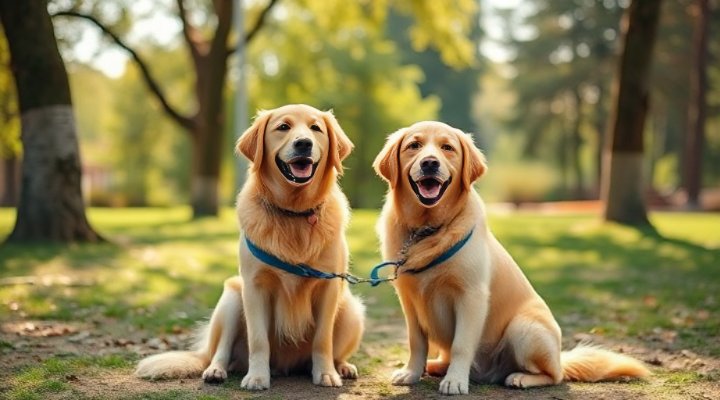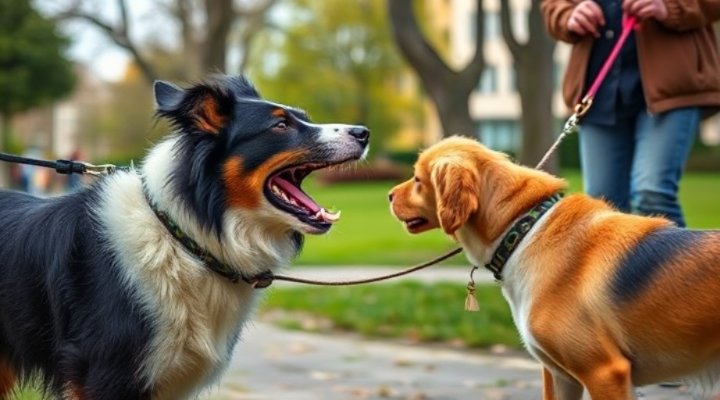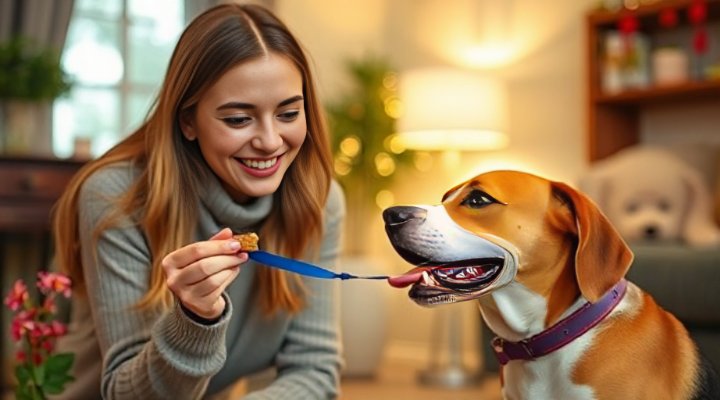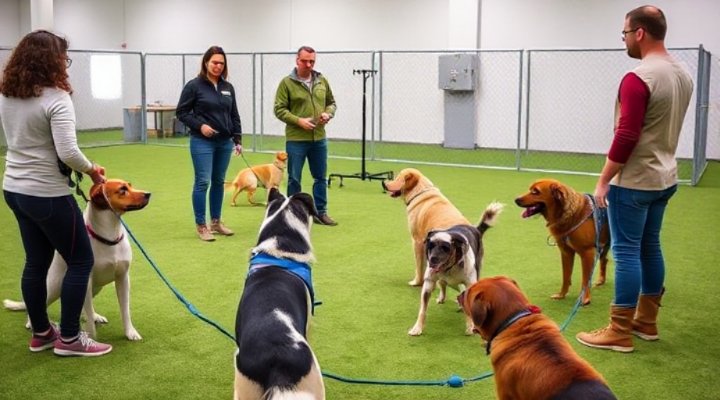If you’re searching for ‘reactive dog training near me’, you’re likely dealing with a furry friend who gets overly excited or anxious around strangers, other dogs, or new environments. Reactive behavior is more common than you might think, and with the right approach, it can be managed effectively.

Understanding Reactive Behavior in Dogs
Reactivity in dogs isn’t about aggression – it’s about overstimulation. When your dog barks, lunges, or becomes uncontrollable at the sight of another dog or person, they’re essentially saying ‘I’m uncomfortable!’ through their behavior. This could stem from fear, frustration, or lack of proper socialization.
For example, my neighbor’s Labrador, Max, would transform from a calm family pet to a barking machine whenever he saw another dog. After enrolling in reactive dog training programs, he’s now able to walk past other dogs without incident.

Signs Your Dog Needs Reactive Training
How do you know if your dog needs specialized training? Look for these signs:
- Excessive barking at strangers or other animals
- Pulling hard on the leash when stimulated
- Difficulty calming down after an exciting event
- Showing anxious body language (tail tucked, ears back)
Remember, reactivity exists on a spectrum. Some dogs might just need minor adjustments, while others require more intensive behavior modification.
Effective Techniques for Reactive Dogs
The cornerstone of reactive dog training is creating positive associations. Here are proven methods used by professionals:

1. Counter-Conditioning
This involves changing your dog’s emotional response to triggers. When your dog notices another dog at a distance where they’re aware but not reacting, immediately give high-value treats. Over time, they’ll associate other dogs with good things.
2. Desensitization
Gradually expose your dog to their triggers at a manageable intensity, increasing exposure slowly as they improve. This might mean starting with dogs 50 feet away, then gradually decreasing distance.
As one trainer at our local affordable dog training center explained, ‘We’re not trying to suppress the reaction – we’re changing how the dog feels about the trigger.’
Finding the Right Reactive Dog Training Near You
When searching for ‘reactive dog training near me’, consider these factors:
- Look for certified trainers with experience in behavior modification
- Ask about their methods (should be positive reinforcement-based)
- Check if they offer private sessions or small classes
- Visit the facility beforehand if possible

Many therapy dog training programs also offer excellent foundational skills that can help reactive dogs. The structure and positive environment can work wonders for building confidence.
DIY vs Professional Help
While some mild cases can be managed at home, severe reactivity often benefits from professional guidance. A good trainer can spot subtle body language cues you might miss and create a customized plan.
Remember, reactive dog training isn’t about quick fixes – it’s about building new, positive associations that last a lifetime. With patience and consistency, even the most reactive dogs can learn to navigate the world more calmly.
Related Keywords: reactive dog training, dog behavior modification, dog training near me, aggressive dog training, positive reinforcement dog training
